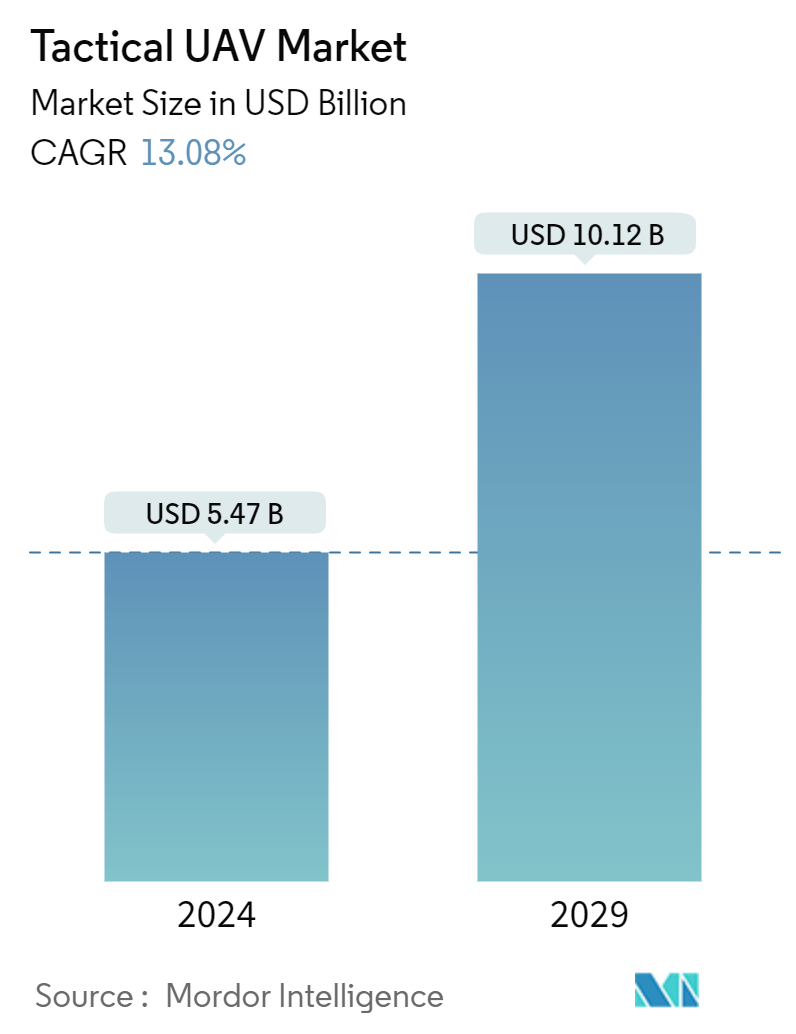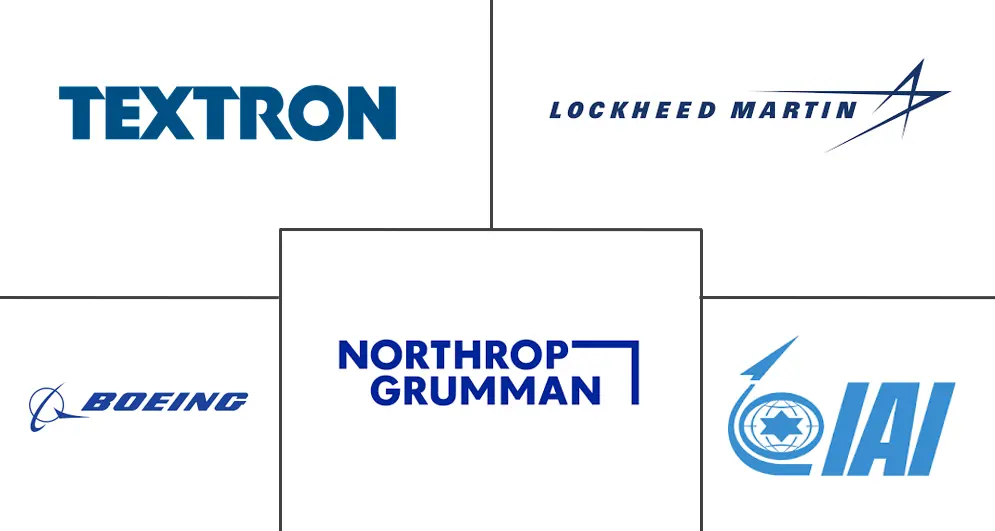Market Size of Tactical UAV Industry

| Study Period | 2019 - 2029 |
| Market Size (2024) | USD 5.47 Billion |
| Market Size (2029) | USD 10.12 Billion |
| CAGR (2024 - 2029) | 13.08 % |
| Fastest Growing Market | Asia-Pacific |
| Largest Market | North America |
Major Players
*Disclaimer: Major Players sorted in no particular order |
Need a report that reflects how COVID-19 has impacted this market and its growth?
Tactical Unmanned Aerial Vehicle (UAV) Market Analysis
The Tactical UAV Market size is estimated at USD 5.47 billion in 2024, and is expected to reach USD 10.12 billion by 2029, growing at a CAGR of 13.08% during the forecast period (2024-2029).
To succeed in critical military missions, real-time information can be the most powerful weapon for warfighters, commanders, and troops to protect themselves. Hence, the armed forces are tailoring their response to the threat using superior tactical intelligence, surveillance, and reconnaissance. This is generating the demand for tactical UAVs from the armed forces worldwide.
Several UAV manufacturers are developing newer generation tactical UAVs with an advanced payload of electro-optical or infrared sensors, with capabilities to transmit live video and other invaluable information that can empower troops. Major opportunities for OEMs remain in multi-role UAV platforms capable of performing a variety of missions, including reconnaissance, surveillance, and strike missions. There is a growing demand for UAVs for civilian applications, such as disaster response and infrastructure inspection, which can open revenue streams for UAV manufacturers.
The primary challenge for tactical UAV adoption is regulatory constraints and airspace integration. Regulatory hurdles, such as restrictions on flight altitudes and airspace access, can hinder the adoption of tactical UAVs in a few countries.
There is continuous advancement in the autonomy and intelligence capabilities of UAVs. Tactical UAVs are becoming increasingly autonomous and able to perform complex missions with minimal human intervention. This advancement in autonomous technology is driven by the need for more efficient and effective military operations and advancements in artificial intelligence and sensor technologies. There is a shift in demand toward smaller, more agile UAVs that can be deployed instantly and can operate in challenging environments.
